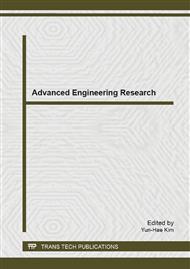p.780
p.784
p.788
p.792
p.799
p.803
p.808
p.812
p.816
Fabrication of Copper-Based Superhydrophobic Surface through Template Deposition
Abstract:
Experiment prepared polystyrene microspheres with a diameter of 722nm, the template of polystyrene microspheres obtained through the self-assembly. The copper atoms fill the voids of the template by electrochemical deposition, after removing template, copper surface obtain regular arrangement of spherical cave structure. Copper surface with spherical cave modified fluorosilane by chemical method, The contact angle of the surface is 156.3 ° through contact angle measuring. Superhydrophobicity of prepared copper surface is because of two important factors, one is regular microstructure of spherical cave, the other is modification of fluoroalkylsilane.
Info:
Periodical:
Pages:
799-802
Citation:
Online since:
April 2014
Authors:
Keywords:
Price:
Сopyright:
© 2014 Trans Tech Publications Ltd. All Rights Reserved
Share:
Citation:


